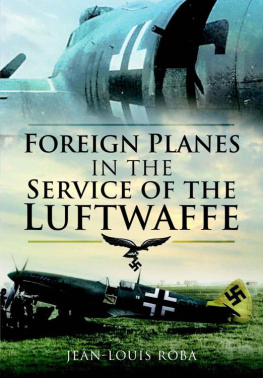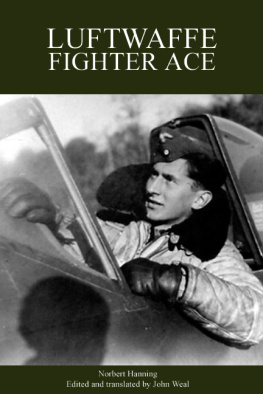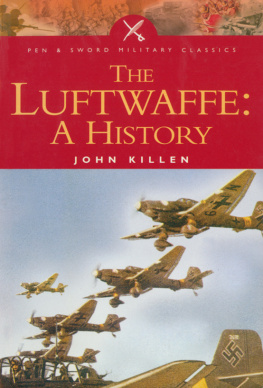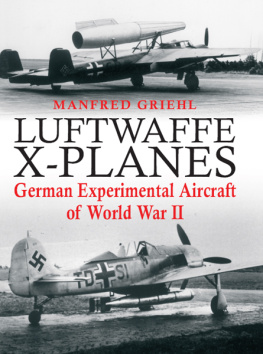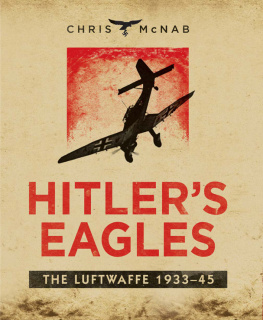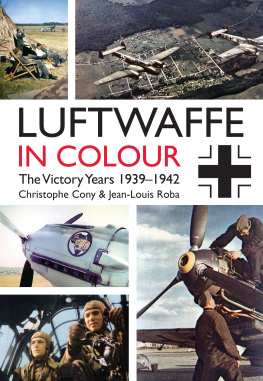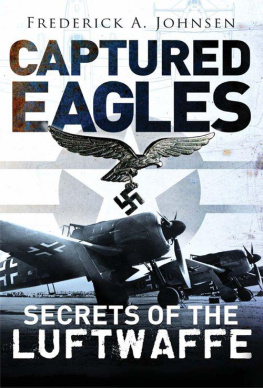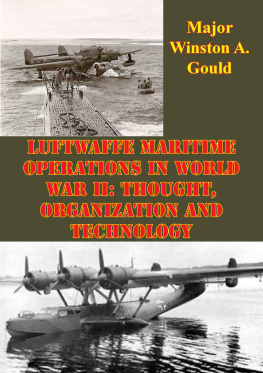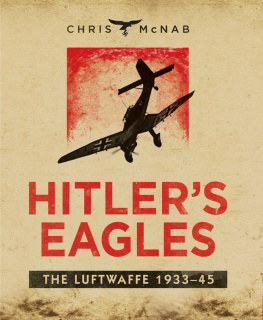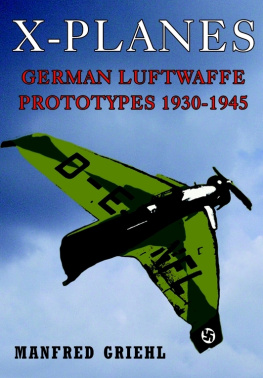Foreign Plans in the Service of the Luftwaffe
Jean-louis Roba
First published in Great Britain in 2009 by
Pen & Sword Aviation
an imprint of
Pen & Sword Books Ltd
47 Church Street
Barnsley
South Yorkshire
S70 2AS
Copyright Jean-Louis Roba 2009
9781783409860
The right of Jean-Louis Roba to be identified as Author of this Work
has been asserted by him in accordance with the Copyright,
Designs and Patents Act 1988.
A CIP catalogue record for this book is available from the British Library
All rights reserved. No part of this book may be reproduced or transmitted in any form or by any means, electronic or mechanical including photocopying, recording or by any information storage and retrieval system, without permission from the Publisher in writing.
Typeset in Sabon 11/13pt by
Concept, Huddersfield
Printed by the MPG Books Group in the UK
Pen & Sword Books Ltd incorporates the Imprints of Pen & Sword
Aviation, Pen & Sword Maritime, Pen & Sword Military, Wharncliffe
Local History, Pen & Sword Select, Pen & Sword Military Classics,
Leo Cooper, Remember When, Seaforth Publishing and Frontline
Publishing.
For a complete list of Pen & Sword titles please contact
PEN & SWORD BOOKS LIMITED
47 Church Street, Barnsley, South Yorkshire, S70 2AS, England
E-mail: enquiries@pen-and-sword.co.uk
Website: www.pen-and-sword.co.uk
PROLOGUE
F rom the end of the Second World War up to the present day, many authors have asserted the invincibility of the German Airforce as proof that the Third Reich had prepared for a war of aggression. This is a very simplistic vision, as the new German Luftwaffe was only created on 15 May 1933 (the first fighter unit being raised on 20 April 1934). Indeed, to raise such a force (forbidden by the Treaty of Versailles), the recently elected German government had to first assemble personnel ad hoc (initially ex-soldiers of the Great War coming from the Imperial Airforce as with Robert Ritter von Greim, from the Navy as with Theo Osterkamp, or from the Army as with Albert Kesselring) before launching a large programme of plane building. This was an arduous task to complete in five short years, but through competence and desire for revenge the Luftwaffe units appeared on time nearly every month.
In Spain, German specialists could examine captured Soviet planes (such as these Polikarpov I-15s lined up after the Nationalist victory). But as they were sent to the famed test centre at Rechlin, no Soviet planes could be included at that time in the Luftwaffe.
Another Soviet plane used by the Republican Airforce in Spain was the beautiful bomber Tupolev SB-2. One of them is seen here being examined by German personnel. SB-2s will later be used in numbers by the Luftwaffe.
Even if the involvement of the flying components of the Condor Legion in the civil war of Spain from 1936 helped the Luftwaffe to gain some experience in new tactics, this could in no way boost the production of planes limited by the capabilities of the aircraft industry.
Despite the reputation for German seriousness, the building of the Luftwaffe remained quite anarchic, and some important tasks had to be neglected due to lack of time or capabilities. Therefore, contrary to the simplifications of the above mentioned authors, the new (and too rapidly built) German Airforce was handicapped by many Achilles heels:
- the engineers did not have enough time to conceive a long range bomber (such as the future American B-17);
- the production of transport planes was limited, and throughout the war the Luftwaffe suffered severely from a lack of air supplies;
- the German industries having to build important war materials (guns, tanks, etc), and as everything had to be made from scratch, not enough aircraft were produced. So, at the time of the Battle of Britain (August/September 1940), British industries produced more fighters than their German counterparts (a fact largely unmentioned by the supporters of The Few).
Thus, before and during wartime, leaders of the Luftwaffe had to face a real problem: how to find enough planes for training, transport, fighting or bombing. Buying foreign planes was impossible due to lack of money, the normal desire to support local production and the natural distaste all pilots had for an unknown aircraft.
This is why, on all occasions, the Luftwaffe tried to include in its ranks foreign planes that had fallen into German hands. The Luftwaffe was therefore the airforce to have used the most captured planes alongside its own aircraft. That is the subject of this book.
CHAPTER ONE
BEFORE THE WAR
T he lack of planes was so serious that the Luftwaffe included aircraft of foreign origin in its ranks even before the Second World War. The first such machines were Italian ones employed by the Austrian Airforce. On 13 March 1938, Adolf Hitler announced the reattachment of his native Austria to Germany. This Anschluss was approved by the majority of Austrians and, at the same time the Fhrer made his entry into Vienna, the Austrian Army was absorbed by the Wehrmacht. Austria, ruined by the mad destruction of the Austro-Hungarian monarchy after the Great War, had no opportunity to launch local plane production and most of its military planes came from Italy. Their Fiat fighters were not of good quality (the best one being the Fiat CR.32) and, after a short presence in fighter units (presumably in JG 76 the future JG 54 a Geschwader composed of some ex-Austrian military flyers), they were replaced by Bf 109s and transferred to air schools. This handful of Austrian planes were probably used until 1941 when lack of parts forced them to be grounded (scrapped).
On 14 March 1938, the Schwechat (Vienna) Fighter Group paid a visit to its German counterpart, JG 132, based at Dberitz (Berlin). As the Anschluss occurred a day only before, the Fiat CR.32s of the unit were immediately seized and repainted in the Luftwaffe colours.
German and ex-Austrian pilots in front of CR.32s. This photo was probably of JG 76.
Fiat CR.32 No. 169 with German markings: a thin fuselage black cross and the swastika on a white circle with red background on the tail.
This Fiat CR.20, too obsolete to be included in the Luftwaffe, is used as a gate guardian in a German Airforce barracks.
The same CR.20 photographed from the rear.

